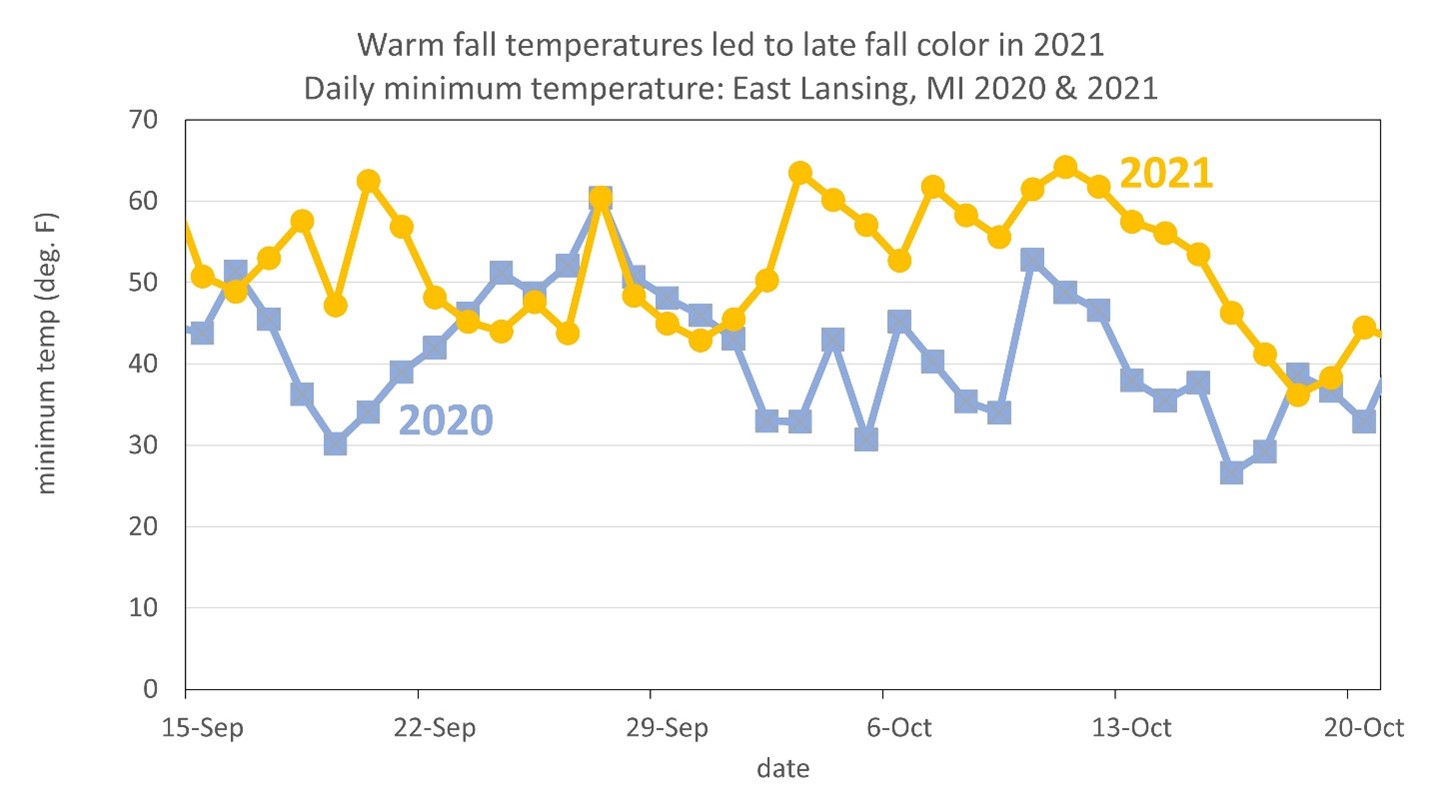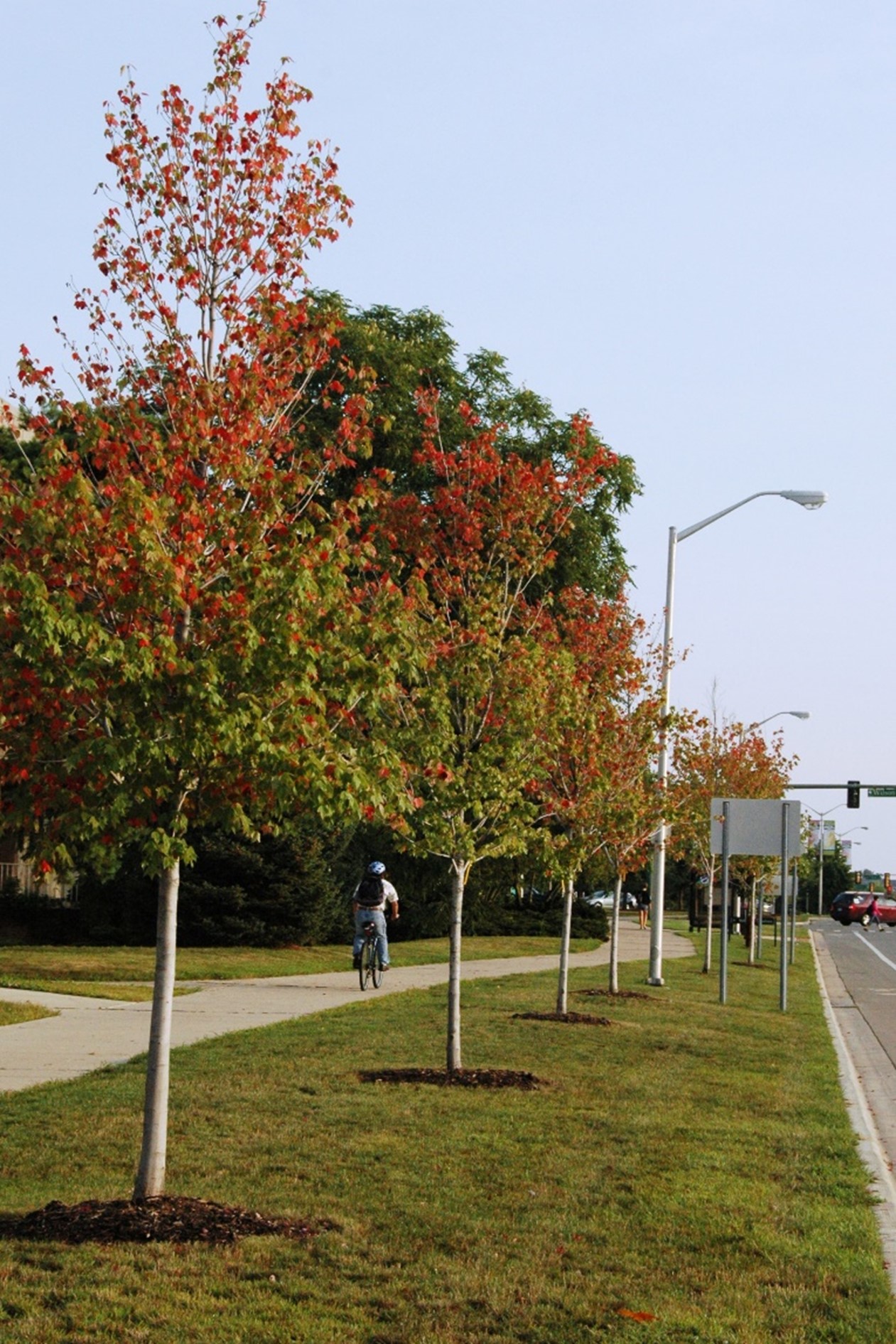Fall color season is just around the corner
Peak fall color is the result of a combination of daylength, weather and tree type.

As local high school sports teams gear up for their upcoming seasons, another fall season—fall color season—is almost upon us as well. One of the common questions I receive this time of year is, “What kind of fall color season will we have?” With the amount and diversity of deciduous hardwood trees we have here in Michigan, a good fall color season is almost a sure thing—what is less certain is the timing of our fall color.
The change of leaf color in the fall is the result of the green pigments (chlorophylls) in leaves breaking down and revealing yellow, orange, red and purple pigments (carotenoids, xanthophylls and anthocyanins) as trees shift their metabolism to prepare for winter. These processes are set into motion by two environmental factors. One factor that affects fall color is shortening daylength—or technically, lengthening nights, which is what trees actually sense. The pattern of day/night length, of course, stays the same from year to year and is the most consistent factor that goes into changing colors.
The other environmental factor that affects fall color is weather which, of course, can vary widely from year to year. The biggest factor that affects the timing of fall color is temperature, especially nighttime low temperatures. The effect of low temperatures on timing of fall color was dramatically illustrated by the last two fall color seasons. In 2021, we had a very warm early fall throughout Michigan resulting in the late onset of fall color. This contrasted dramatically with the fall color pattern in 2020 and can be seen in a series of photos submitted to Mark Torregrossa’s MLive page.
The difference in fall color timing between 2021 and 2020 was set in motion by early cold in 2020, while in 2021 temperatures were mild throughout the early fall. For example, in East Lansing, Michigan, nighttime low temperatures from mid-September to mid-October in 2021 were nearly 12 degrees Fahrenheit warmer than during the same period in 2020 (Photo 2).

Another factor that can affect the timing of fall color is rainfall and soil moisture. In exceptionally dry years or on stressful sites, we can often see fall color appear earlier than in drier years or on wetter sites. In addition, in dry autumns we may also see shorter fall color as leaves may begin to abscise more quickly than in wetter years.

So, what does the timing look like for the 2022 fall color season?
Our normal fall color pattern in Michigan starts in mid-September in the western and central Upper Peninsula and then works its way eastward and southward week by week until it concludes in mid- to late- October in southern lower Michigan. Currently, the long-term outlook for the fall calls for slightly warmer than average temperatures and near normal to slightly below normal rainfall. If this pattern holds, we should expect slightly later than normal fall color, though hopefully not as late as 2021.
The timing and type of fall color that we see also depends on the types of trees that are present in our local forests. Fortunately, nearly everyone in Michigan has trees around them that will provide good fall color. Most forests in Michigan have maples—either red maple or sugar maples—that shine with bright reds and oranges through the fall season. For folks in the Upper Peninsula and northern Michigan, aspens can add a splash of yellow. Forests in many parts of lower Michigan have plenty of oaks that add deep russet reds and hickories or sassafras (Photo 1) that add yellow or orange to the fall color lineup.



 Print
Print Email
Email

